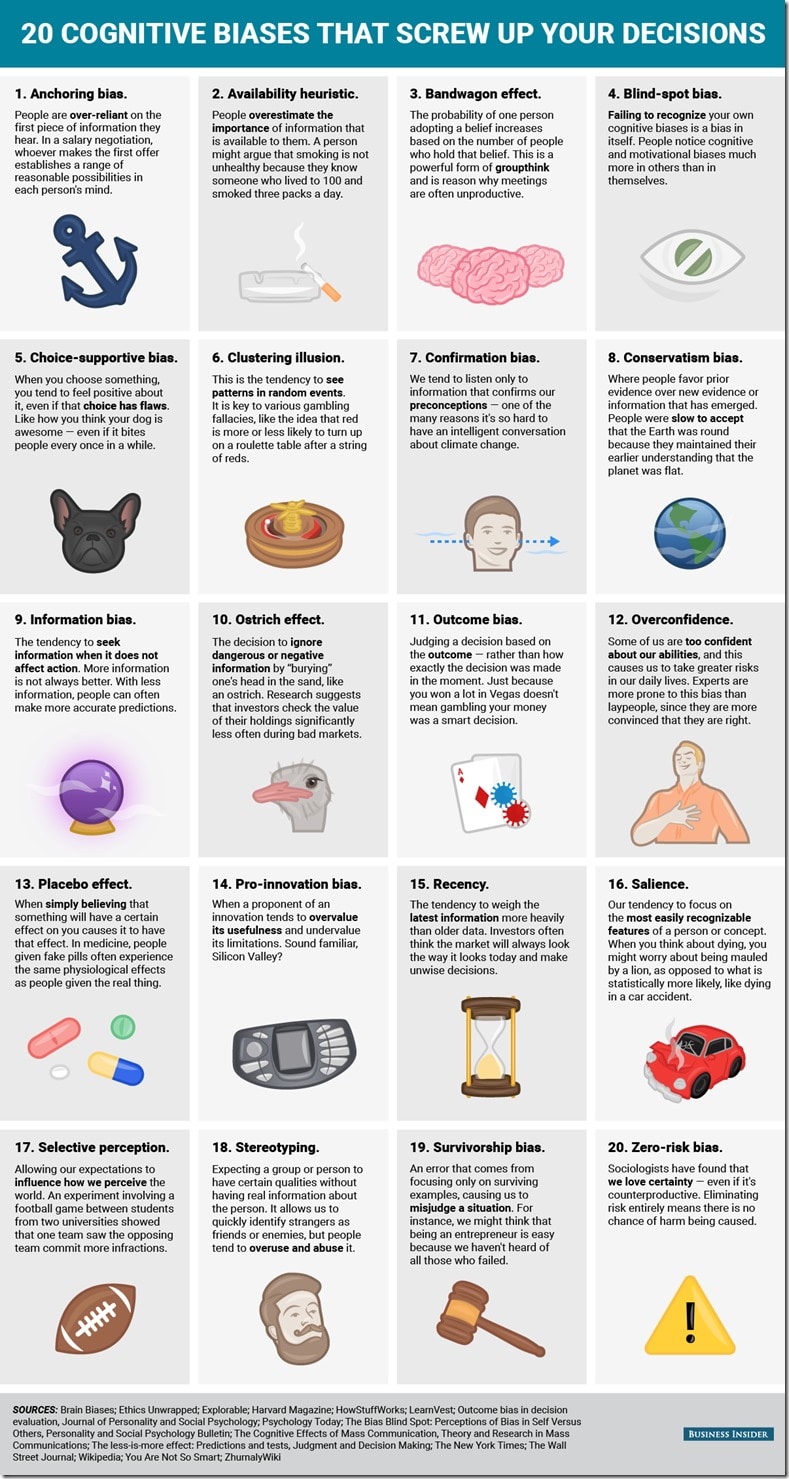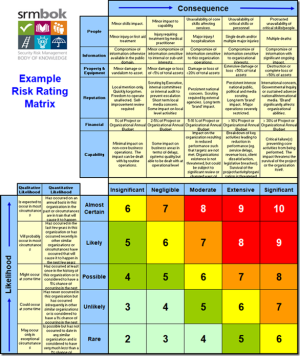20 Cognitive Biases That Affect Risk Decision Making
Republished by request
Thanks to Rob Long for sharing this – originally published here on Business Insider.
Ever wondered why your decisions, risk assessments and incident investigations are not as objective as you may think?
Rob Long defines cognitive bias (Here) as “a pattern of deviation in judgment. Individuals create their own ‘subjective social reality’ from their perception of their engagement with others in groups and organisations. There are more than 250 cognitive biases, effects and heuristics that affect the judgment and decision making of humans. Most biases and effects are socially conditioned”. See some more of the common cognitive biases in risk and safety below this info graphic.
As Rob Sams explains in “I’m biased but that’s OK”:
If we want to truly understand and deal with risk, we need to recognise that it is subjective and that our thinking about risk is biased in so many ways.
See Rob and Gab Carlton talking about bias in this short video https://safetyrisk.net/conversations-on-the-couchbiases/
Rob Long explains some of the other Cognitive Bias – from HERE
Some of the most common cognitive biases are:
· Abilene Paradox: Organisations frequently take actions in contradiction to what they really want to do and therefore defeat the very purposes they are trying to achieve … the inability to manage agreement is a major source of organisation dysfunction.
· Anchoring or focalism – the tendency to rely too heavily, or ‘anchor’, on a past reference or on one trait or piece of information when making decisions.
· Availability heuristic – the tendency to overestimate the likelihood of events with greater ‘availability’ in memory, which can be influenced by how recent the memories are, or how unusual or emotionally charged they may be.
· Dunning–Kruger effect an effect in which incompetent people fail to realise they are incompetent because they lack the skill to distinguish between competence and incompetence.
· Fundamental attribution error – the tendency for people to over-emphasize personality-based explanations for behaviors observed in others while under-emphasizing the role and power of situational influences on the same behaviour (see also actor-observer bias, group attribution error, positivity effect, and negativity effect)
· Gambler’s fallacy – the tendency to think that future probabilities are altered by past events, when in reality they are unchanged. Results from an erroneous conceptualization of the law of large numbers. For example, ‘I’ve flipped heads with this coin five times consecutively, so the chance of tails coming out on the sixth flip is much greater than heads.’
· Hindsight bias – sometimes called the ‘I-knew-it-all-along’ effect, the tendency to see past events as being predictable at the time those events happened. Colloquially referred to as “Hindsight is 20/20”.
· Hot-hand fallacy – The “hot-hand fallacy” (also known as the “hot hand phenomenon” or “hot hand”) is the fallacious belief that a person who has experienced success has a greater chance of further success in additional attempts.
· Primacy effect, Recency effect & Serial position effect: that items near the end of a list are the easiest to recall, followed by the items at the beginning of a list; items in the middle are the least likely to be remembered
· Sunk Cost Effect: When we have put effort into something, we are often reluctant to pull out because of the loss that we will make, even if continued refusal to jump ship will lead to even more loss. The potential dissonance of accepting that we made a mistake acts to keep us in blind hope.
 Try this one HERE for a bit of fun
Try this one HERE for a bit of fun



Do you have any thoughts? Please share them below